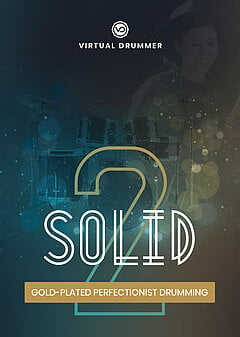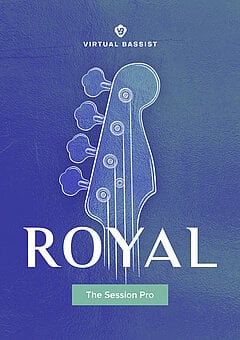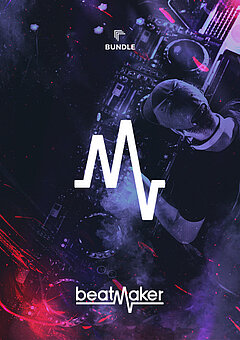Comprehensive Guide To Virtual Instruments
This guide helps you to hit the ground running in music production: learn what virtual instruments do, how they work and what you should expect.
APRIL 4TH, 2020
If you want to learn more about virtual instruments, look no further! Our guide covers the most important topics to get you started.
- What are Virtual Instruments?
- Types of Virtual Instruments
- History of Virtual Instruments
- Virtual Instrument Formats
- Current State of the Industry
- Common Term Explanation
What Are Virtual Instruments, and Where Do You Get Them?
The short answer: pieces of software that enable you to create music with only a computer, without the use of live instruments or hardware synthesizers. Once you’ve chosen your digital audio workstation (DAW), such as Ableton Live, Logic Pro X, Reaper, FL Studio, Pro Tools, or Cubase, you’ll naturally want to get started making music right away. Each of these programs comes with built-in virtual instruments that you don’t need to buy separately. They’re typically fairly basic, but each DAW has a couple gems you’ll use frequently even as you expand your search for the best options. Check out this extensive guide on choosing your ideal DAW. When you start to compare and buy virtual instruments, you’ll probably be looking for a good drum, guitar, piano, and bass (among others), as well as a myriad of fun synthesizers. The predominant thought in your mind will quickly shift from “why should I buy a virtual instrument” to “I think I don’t have enough virtual instruments” (gear envy is very real...and if it hasn’t claimed you yet, it’s only a matter of time).
Types of Virtual Instruments
Virtual instruments typically fall into one of two categories: instruments (sample libraries/synthesizers) and effects(including “MIDI effects”, such as arpeggiators and note transposition that don’t directly work with audio).
Instruments
Sample libraries contain sets of pre-recorded audio samples mapped to a keyboard. When you play the instrument through a MIDI controller, you’re hearing actual recordings played back in real time. This often uses a lot of RAM, and you have to be careful about how many sample libraries you have loaded at once to avoid straining your computer’s memory. It can take multiple gigabytes of audio to recreate the sound and playing style of an acoustic instrument. Synthesizers by contrast create sound from code, meaning there’s little to no pre-recorded audio (and they usually aren’t meant to sound like acoustic instruments). Massive, Serum, Sylenth, and many others fit into this category. Certain synthesizers like Nexus, Omnisphere, and Absynth extensively incorporate pre-recorded audio (or “samples”) quite heavily, allowing for a lot more creative potential than synthesis alone can offer.
Effects
Effects or FX-plugins are different from sample libraries and synthesizers in that they process audio rather than create it. Delay, reverb, compression, distortion (and the wide range of creative effects such as vocoders and filters all fall into this category). Most DAWs allow you to use multiple effects in sequence, often resulting in a very different sound than you can create from sample libraries and synthesizers alone.
History of Virtual Instruments
The closest thing to a virtual instrument prior to its inception was likely a sampler. If you’re not familiar with the hardware version, a sampler could essentially take recorded audio and map it to a keyboard, allowing for melodic playback, pitch shifting, and a range of other effects. Native Instruments became one of the first companies to bridge the gap between samplers and computers when they created Generator, the first instrument to run on a native machine (which incidentally is how the company got its name). One of the most popular virtual samplers today, Kontakt, was built on Reaktor, which was actually created from Generator. Clearly, the foundation of the very first virtual instrument is very much alive today.
The Creation of VST
In 1996, the first standardized virtual instrument software format was created (and is the most prevalent format to this day): Virtual Studio Technology, or “VST.” While the term “VST” is often used interchangeably with “virtual instrument,” VSTs are a specific format created by the audio software company Steinberg in 1996. Even so, it wasn’t until the Model-E (Minimoog emulation) was born in the year 2000 that the VST format was used commercially. UJAM core team members Peter Gorges and Paul Kellett helped pioneer virtual instruments with their former company Wizoo. Wizoo participated in Steinberg’s first drum machine LM4 and later co-developed the first virtual piano "The Grand", Virtual Guitarist, Hypersonic and many other successful virtual instruments with them. Wizoo was acquired by Digidesign in 2005, becoming "Pro Tools Virtual Instrument Team" (AIR Group) and Peter Gorges and Paul Kellett moved on to start UJAM in 2009. The VST format has allowed developers, artists and audio engineers to create sophisticated audio plugins that helped musicians to create music without anything more than a computer, proper listening environment, and MIDI controller/keyboard. By entering MIDI notes through a compatible keyboard or controller, it became possible to enter notes into a computer and have them played back by a virtual instrument. Some of the major limitations came from the computer architectures available at the time--PCs and Macs simply didn’t have the RAM or processing power to handle large sample libraries.
The Evolution of Virtual Instruments
Compared to today, the capabilities of digital audio software at its inception were incredibly limited. But given that this was only 24 years ago as of 2020, progress in this field has been nothing short of astounding. It took a while for sample libraries to achieve convincing realism. Typically there would be one recording per MIDI note, if that (sometimes one sample was pitched up or down over multiple semitones to conserve memory). As digital processing and storage became cheaper and more efficient, companies began recording much larger sample sets, and instrument sizes began to skyrocket in an effort to get closer and closer to perfectly emulating a musician’s live performance. On the synthesis side, instruments frequently suffered from heavy aliasing. Frequencies above the Nyquist limit, or half the sample rate, were mapped back into the audio signal. Understanding aliasing requires significant background knowledge in digital audio theory, but in essence, aliasing is a form of distortion added back into the signal, making early digital synthesizers sound “cheap.” To this day, many producers prefer to use analog hardware synthesizers because their organic quality is difficult to achieve even through the top virtual instruments; but every year, digital synths are getting dramatically closer to achieving the sound quality of analog synths. As the processing power of computers rapidly improved, removing aliasing became easier and opened the door for such technologies as additive synthesis, which allow for very sophisticated control over sound production. At present, there are far too many synthesis methods to discuss, and possibilities for creatively shaping sound are nearly limitless.
Virtual Instrument Formats
In addition to the VST format, there are also AU (Audio Units, the only format used by GarageBand and Logic Pro X), AAX (Avid’s proprietary format for Pro Tools plugins), and most recently, VST3 (a new iteration of the more commonly used VST2 format, not yet supported by every DAW). Plugin compatibility starts to become an issue here. Although VST2 is the most widely used format, not every DAW supports it. You’ll probably see these options when you’re running any audio plugin installer, and as long as you check the options you need for your DAW of choice, you should be good to go.
Current State of the Industry
The barrier of entry to music production is consistently becoming lower each year, to the point where it’s almost easier to become paralyzed by the plethora of creative options than by the complexity of DAWs and virtual instruments. Plugins like Native Instruments’ Reaktor even offer producers the ability to author their own instruments with little to no programming experience, assuming a certain level of digital audio knowledge. One of the most interesting technologies on the horizon is physical modelling, or the ability to simulate the sound of an acoustic instrument entirely through code, without the use of audio samples. RAM requirements are cut down to a fraction of a sample library of comparable quality, and in some cases less processing power is required. Wallander Instruments has shown promise for many years, and some of their woodwinds and brass are nearly indistinguishable from real acoustic instruments. UJAM’s main focus since our start in 2009 has been to lower the music production industry’s barrier to entry. Most recently, we released a virtual acoustic, electric and metal bass guitar combination in Virtual Bassist 2 to simplify the process of writing bass lines tailored to any genre. As the technology becomes more accessible and creative possibilities continue to grow exponentially, we wanted to make software more accessible by taking some of the guesswork out of music theory and songwriting. If you’re curious, you can try it out for 30 days for free! At this point, you should have a clear idea of the possibilities offered by the new virtual instruments coming to market every year, and you can begin to see the endless opportunities offered by digital audio production. Nothing can ever replace the need for practice, creativity, and learning new skills, but there are more resources than ever to get you started. If you’re excited, then you’re in a great place! Music production is a ton of fun, and you’ll never run out of new information to apply and emerging technologies to try out. And whenever you need something to jumpstart your inspiration or eliminate confusion around music production, check back on UJAM’s website--we’re adding new articles and instruments all the time to empower you to create music with more freedom than ever.
Common Term Explanation
- AAX (Avid Audio eXtension) – Avid’s proprietary virtual instrument format for Pro Tools
- Aliasing – distortion resulting from frequencies over the Nyquist limit, which is half the sample rate you’re currently working in
- AU (Audio Units) – Apple’s virtual instrument format for GarageBand and Logic Pro X, compatible with other OS X DAWs like Ableton live
- Effect (FX) Plugin – virtual instrument designed to process audio in a specific way
- Physical Modelling – recreating the sound of an acoustic instrument without pre-recorded audio samples
- Sample Library – creates audio by playing back pre-recorded audio samples, designed to emulate an acoustic instrument
- Synthesizer – creates audio through code, sometimes layering pre-recorded samples
- Virtual Instrument – a digital tool for creating music, typically without the need to record live audio
- VST(Virtual Studio Technology)– the original and most common plugin format for virtual instruments, developed by Steinberg
Stay up to date
Sign up and we’ll send you an e-mail with product news and helpful stuff every now and then. You may unsubscribe at any time.
Defy Limits
We develop software solutions that enable people to create, consume and interact with music.




